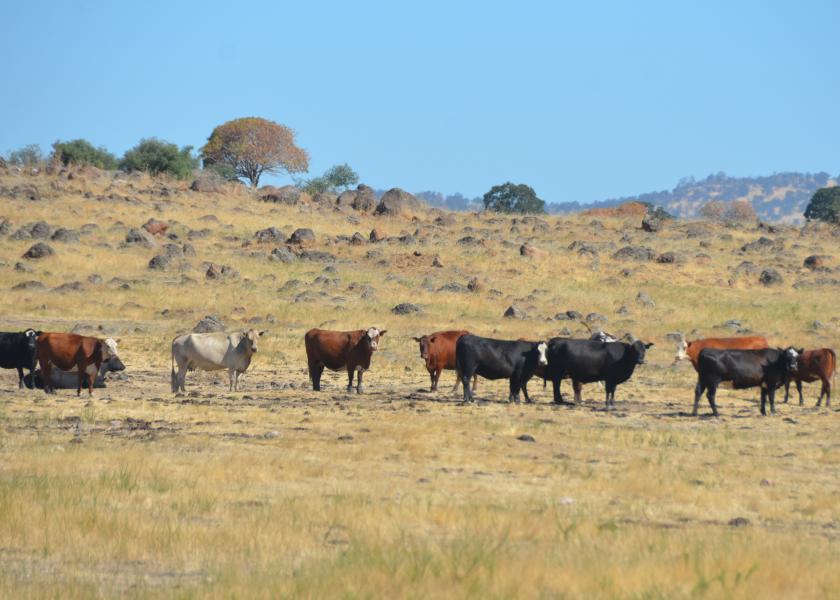Despite Drought, Cow Slaughter Trends Lower

Despite an expanding drought, U.S. cow slaughter is down 0.5% from last year and draws attention to how cull cows impact America’s beef consumption.
For the week ending July 20, USDA reports total beef and dairy cow slaughter at 114,500 head, down 3.4% from the same week a year ago. Over the past four weeks – including the holiday-shortened week – total slaughter was 455,700 head, down 0.5%.
“The decline in cow slaughter may come as a surprise to those looking at some of the dry conditions that have developed in the Texas Panhandle and Western Kansas,” writes Len Steiner in the Daily Livestock Report. “But even as this region accounts for a large share of the US beef cow herd, and thus slaughter, it is important to remember that cows are widely distributed around the country.”
Steiner Consulting Group’s analysis of cow slaughter indicates that declines in dairy cow slaughter “more than offset the increase in beef cow slaughter in regions experiencing drought stress.”
USDA reported U.S. beef cow slaughter for the last four weeks increased by 20,300 head, or 9% compared to the same period last year. During the same four weeks, however, dairy cow slaughter was down 22,400 head or 10% from a year ago.
“Given recent drought stress, it is not surprising that beef cow slaughter in region 6 (AR, LA, NM, OK, TX) was up 7,900 head or 15% compared to a year ago,” Steiner said. “Beef cow slaughter in region 9, which includes drought affected Arizona and California, was up 6,300 head or 46% from a year ago. California has more dairy cows than beef cows, however and dairy cow slaughter in the region is more a function of dairy prices than drought.”
California’s beef cow inventory was 665,000 head on January 1, but the number of dairy cows in the state is much larger at 1.725 million head. Dairy cow slaughter in region 9 is down 11% during the last four weeks compared to last year.
“Dairy cow slaughter is down across most regions as excellent milk/cheese prices have once again brought a margin back in the business,” Steiner said. “Milk prices are now about double what they were in late April and early May. US cheddar prices have also jumped 170% during this period.”
Steiner notes the U.S. government food box program has played a role in the tighter spot cheese supplies and higher prices. About $3 billion was allocated to purchase boxes of food distributed to low income families. Phase III of the program was just announced and the allocated money is to be spent by October 1.
“Will this result in a demand slump at the end of the year?” Steiner asks. “Will foodservice demand improve enough by then to offset the expected demand slowdown? Will the government allocate more money to go towards food for families in need? These are hard to answer questions that could impact dairy prices and cow meat availability later in the fall and early winter. A slump in dairy demand later in the year would result in a higher dairy cull rate at a time when beef cow slaughter also tends to be seasonally higher, pressuring grinding beef values.”







